There was plenty of discussion (read: analysis, hot takes, etc.) when the Pirates swapped Neil Walker for Jon Niese over the winter, but there was one unmissable implication in the trade itself: the Pirates wanted Jon Niese. Sure, they wanted his contract (the two team options give them a lot of control over a potentially valuable arm), but the Pirates tend to acquire pitchers they think they can work with, and they had quite a few suitors for Walker. To make the one-for-one Niese/Walker swap, the Pirates must have seen something in Niese that stood out. It’s easy (and not even necessarily wrong!) to fall into the “Ray Searage is a wizard who can fix any pitcher,” but I’m more interested to see if we can guess ahead of time what the Pirates saw, and what we might see from Niese as a result.
There’s actually a pretty obvious reason why Niese makes an obvious Searage target; his basic MO as a pitcher is already to throw a lot of a couple of different kinds of fastballs to induce grounders. If you look at his pitch selections since 2010, you can see that he’s often used a fastball/cutter combo that in the last two years has given way towards a cutter/sinker combo. The fastball/sinker/two-seamer distinction is a tough one to make from PitchFX alone and I won’t spend time trying to parse that, but still, you can see how Niese uses his pitches and how his fastball has trended towards a sinker on this graph below (as usual, all of the PitchFX graphs in this post were generated by the invaluable tools at Brooks Baseball):
 Now, let’s look at the groundball rate of his hard pitches:
Now, let’s look at the groundball rate of his hard pitches:
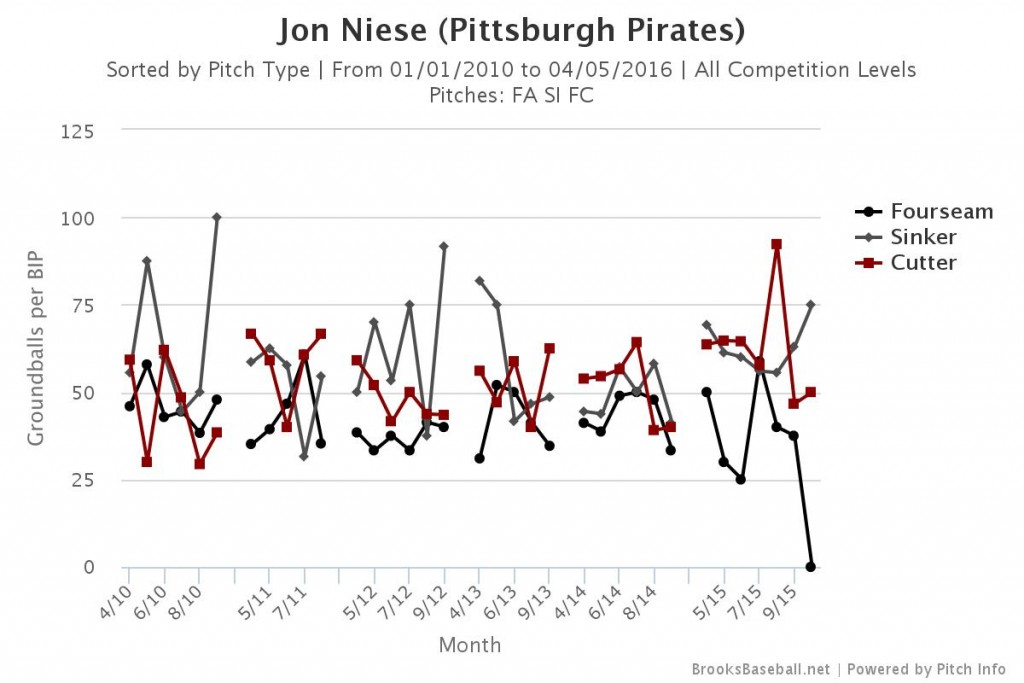
The cutter often sits above 50%, and he got a ton of ground balls from his sinker last year, which accounts for his big spike in ground ball percentage in 2015. The usage of the cutter is a necessity of life for a left-hander sinkerballer; cutters often induce groundballs in off-handed hitters (think Mark Melancon) and often sinkerballers have trouble getting off-handed batters out with their sinkers (think Charlie Morton). Indeed, Niese does use the cutter heavily against righties and hardly at all against lefties.
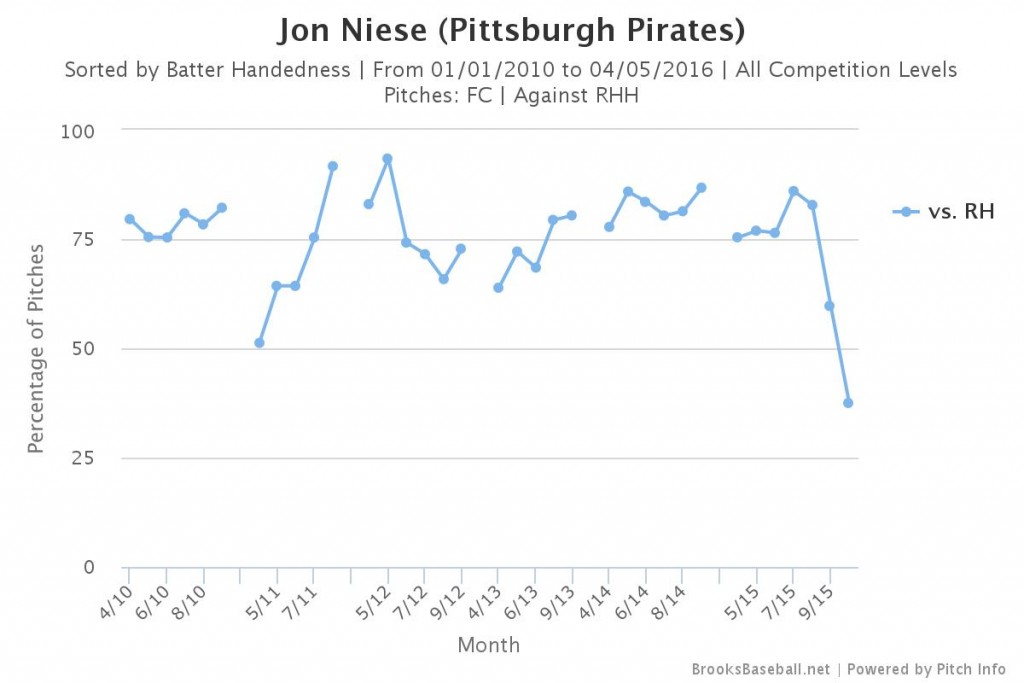
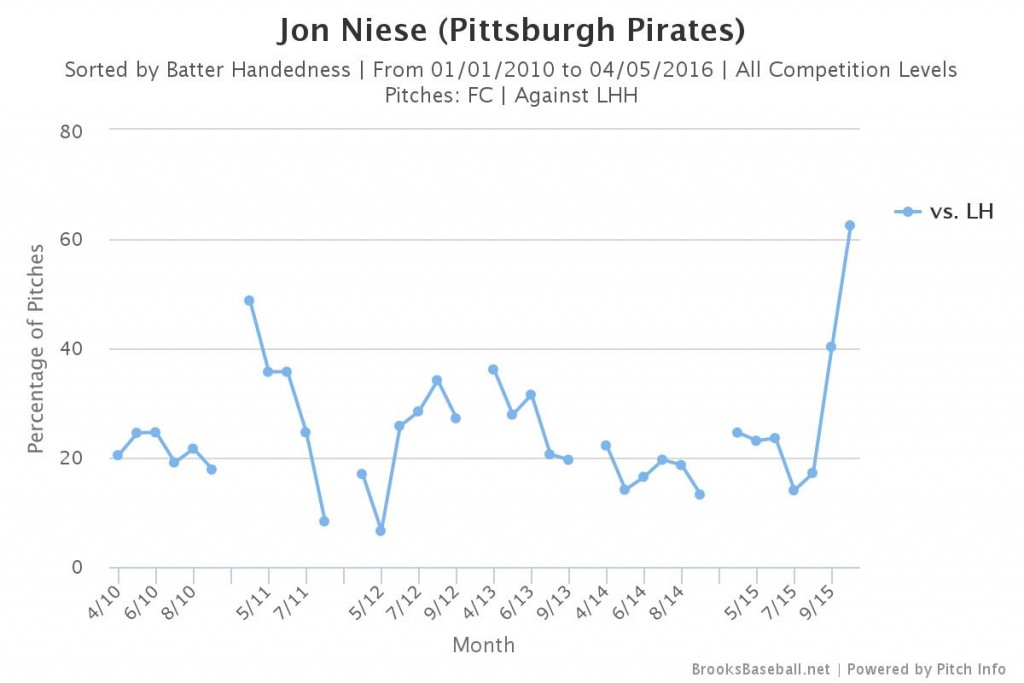
If we accept that the Pirates like Niese for his heavy fastball/cutter, it’s easy to guess what they’ve worked on him with: location. Check out how Niese located his hard pitches in 2015 vs. lefties (top) and righties (bottom).
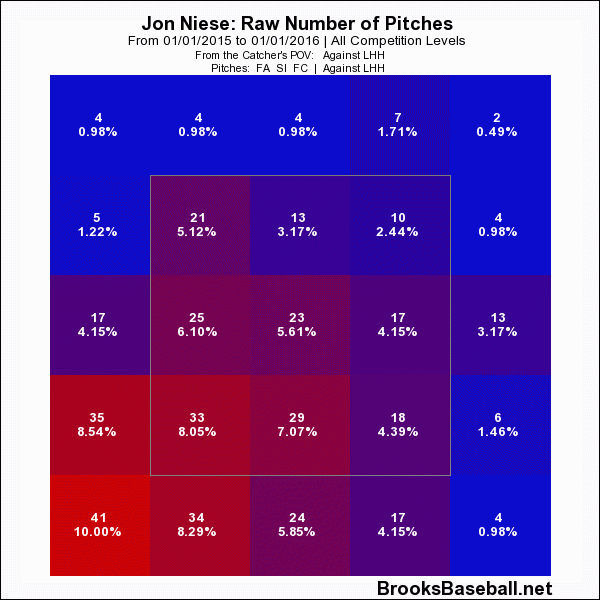
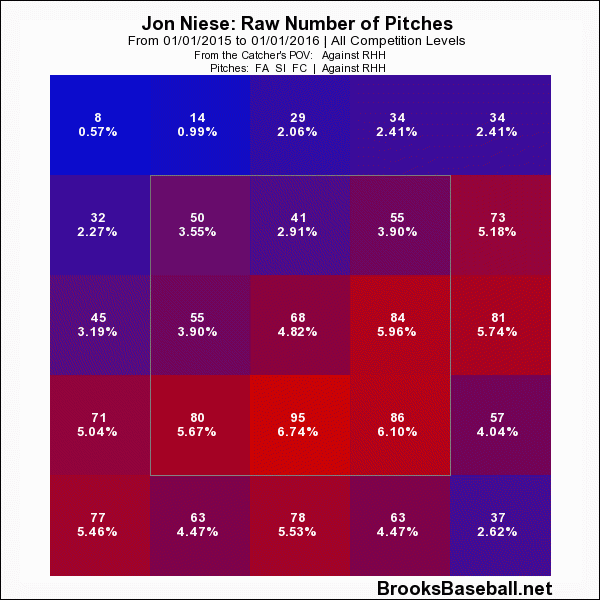
Niese is relatively successful in keeping his hard stuff low and away on lefties, but he leaves a ton of stuff in the zone against righties. For comparison’s sake, let’s look at how JA Happ thew his fastball to both lefties and righties before and after his trade to the Pirates. Lefties first, pre-trade on top and post-trade on bottom.
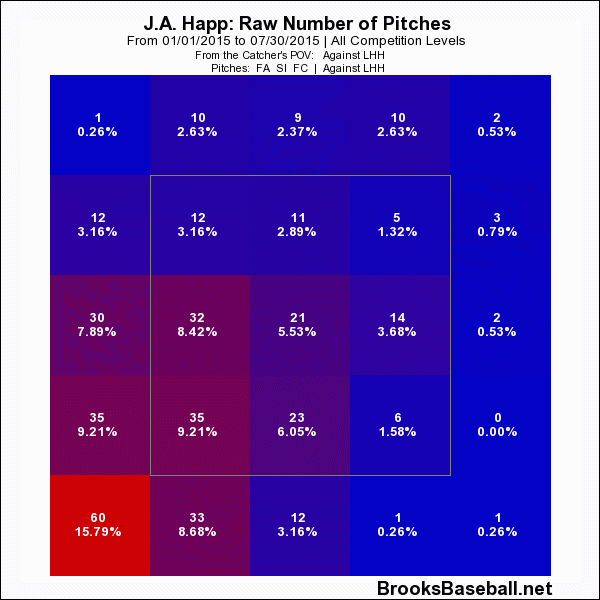
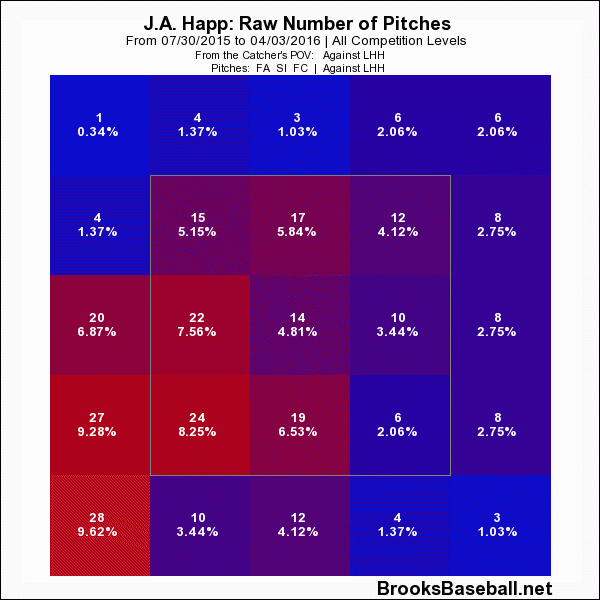
Happ was much more willing to use more of the strike zone with his hard stuff after the trade, likely because of the way the Pirates pitch inside (he threw more total pitches in that far right part of the zone with the Pirates than he did with the Mariners, even though he threw 40 more innings with the Mariners). Let’s look at how he approached righties, again, pre-trade first and post-trade second.

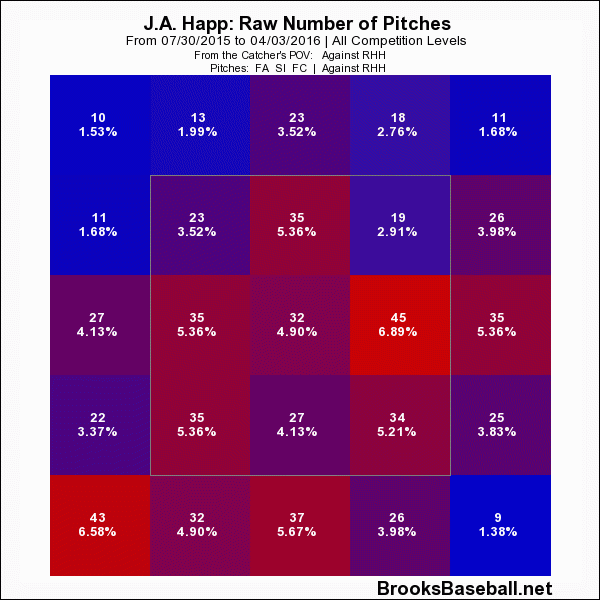
That top chart looks a bit like Niese’s; he tried to hit that low-and-away spot against righties and often ended up leaving the ball over the middle of the plate — both pre-trade Happ and Niese are bright red in the spot just below the center square against righties, which is a dangerous place for a pitcher to live. On the bottom chart, you can see he tried to work in on the hands a bit more, and that he didn’t keep trying to hit a low-and-away target on righties. There’s less bright red in general, meaning that his pitches were a little more evenly distributed, and that just-below-the-middle spot saw way fewer pitches (as a percentage) after he became a Pirate. The Pirates accomplished most of this by ramping up the number of fastballs Happ threw until he was comfortable with the new approach.
You can probably argue that Niese is an even better candidate for this approach than Happ was (note: a better candidate does not guarantee better results; Happ was a pretty extreme case in the way he improved in black and gold), because his hard stuff generates a lot more ground balls than Happ’s does. In general, Niese’s struggles last year came from a dip in strikeouts and a rise in homers (a rise in homers that might be considered a fluke, given his career-high 14.3% HR/FB rate despite the spike in ground balls). He had rotator cuff problems in 2013 and since then his strikeout rate has fallen some and his walk rate has ticked up in two of three seasons. His velocity spiked up at the end of last season to the point that his fastball was registering as fast as (or faster than) it ever had on PitchFX, so the two main issues I see in some of his peripheral numbers from last year are zone pecentage (that is, percentage of pitches in the strike zone) and swinging strike percentage.
I would admit that I could be very wrong about this, but my hunch is that this is going to work quite well for the Pirates and for Niese. Niese relies on his fastball/sinker and cutter quite a bit, and he gets ground balls with them. The Pirates’ main body of work with pitchers is all been about locating those fastball and fastball-type pitches, mainly in the service of getting ground balls. If I had to guess, Niese likely had a number of hang-ups as a result of those 2013 rotator cuff problems, and that the spike in velocity at the end of last year is an indicator that he’s past them. If the Pirates have his mechanics ironed out, this could be a project that requires very little incubation time; they turned Happ’s career around on a dime, and I wouldn’t be shocked to see Niese have success right out of the box this year.
Featured image credit: Leon Halip/Getty Images




















